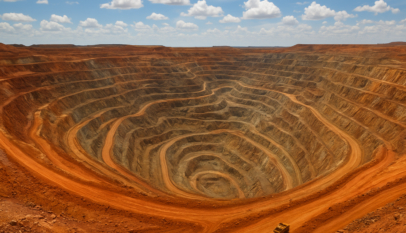
Copper remains a critical resource driven by growing demand in electrification, renewable energy, and electric vehicles, making copper mining stocks a key area for investment consideration. Investors are increasingly looking for stable companies with strong production capabilities and favorable long-term prospects in this evolving market.
Best Copper Mines to Invest In are those operated by companies with consistent production, low costs, and exposure to high-grade deposits, such as Lundin Mining and Ero Copper, which balance risk and reward effectively. These companies stand out for their strategic positions in Canada and other mining regions, offering promising returns aligned with the growing global need for copper.
Understanding the market dynamics and the profiles of top copper miners can help investors make informed decisions. Companies like Taseko Mines and others on the TSX offer diversification opportunities, supported by solid annual returns and operational efficiency critical for navigating fluctuating commodity prices.
Top Copper Mines to Invest In
Copper mining investments vary from established, high-output companies to emerging projects with growth potential. Understanding key players, upcoming projects, and production leaders helps investors make informed decisions based on risk tolerance and market trends.
Major Publicly Traded Copper Mines
Investors often focus on large publicly traded copper mines with stable operations and consistent production. Companies such as Lundin Mining and Ero Copper stand out. Lundin Mining offers diversified assets across regions, minimizing single-mine risk. Ero Copper’s operations are known for high-grade, low-cost output.
These companies provide transparency, liquidity, and steady cash flow, making them attractive options. Their market presence allows investors to track performance easily and benefit from copper price increases over time.
Emerging Copper Mining Projects
Emerging copper projects typically offer higher growth potential but come with increased risks. New mines in development, especially in Canada and the Americas, focus on exploiting rich copper deposits driven by demand from renewable energy and electric vehicles.
Projects such as Taseko Mines aim to expand production capacity, leveraging new technology and regulatory approvals. Investors interested in early-stage exposure should evaluate development status, funding, and projected timelines to assess viability.
Leading Copper Producers by Output
Production volume is a critical metric for evaluating copper mines. Top producers combine scale and efficiency to maintain strong market positions. Companies like Freeport-McMoRan lead globally with millions of tons produced annually.
High output companies benefit from economies of scale, improved cost structures, and longer mine lifespans. Their consistent copper supply supports steady dividends and resilience against price volatility. Production figures are useful indicators of operational strength and market influence.
Investment Considerations for Copper Mines
Investors should evaluate copper mines based on multiple concrete factors that impact both operational success and long-term returns. These include political and environmental risks, the mine’s financial health and growth outlook, and its logistical setup for extracting and transporting copper efficiently.
Geopolitical and Environmental Factors
Copper mining operations are often located in regions with varying degrees of political stability. Investors must assess the risk of government intervention, regulatory changes, or social conflicts that can disrupt production. Countries with strong mining regulations and a clear legal framework tend to offer safer investment environments.
Environmental concerns play a growing role. Mines adopting sustainable practices are favored, as regulatory authorities and institutional investors increasingly demand adherence to strict environmental, social, and governance (ESG) standards. This reduces risks related to fines, production stoppages, and reputational damage.
Environmental impact also affects permitting and community relations, influencing long-term mine viability. Mines working to lower carbon emissions and reduce waste management issues are better positioned to maintain continuous operations.
Financial Performance and Growth Potential
The financial strength of a copper mine is critical. Investors should examine metrics like cash flow, debt levels, and reserve quality. Mines with high-grade copper deposits and proven reserves offer more secure revenue prospects.
Profitability depends on efficient cost structures and the ability to operate at low production costs amid fluctuating copper prices. Companies with technological innovation that improves extraction efficiency may show better margins.
Growth potential relies on expanding reserves, ongoing exploration, and investment in infrastructure. Well-capitalized mines can scale operations to meet rising copper demand driven by industries such as electric vehicles and renewable energy technologies.
Access to Infrastructure and Logistics
A mine’s proximity to transportation routes and processing facilities significantly affects operational costs. Access to ports, railways, and reliable power sources lowers expenses and reduces delays in copper shipment.
Infrastructure quality impacts supply chain reliability. Mines close to major infrastructure hubs are able to move products faster and more efficiently, which enhances cash flow stability.
Logistical challenges in remote locations can increase costs and operational risks. Investing in mines with solid infrastructure and logistics strategies supports sustained production and quicker adaptation to market changes.
British Virgin Islands Company Registration Guide for Seamless Offshore Setup
Registering a company in the British Virgin Islands (BVI) is a straightforward process tha…









